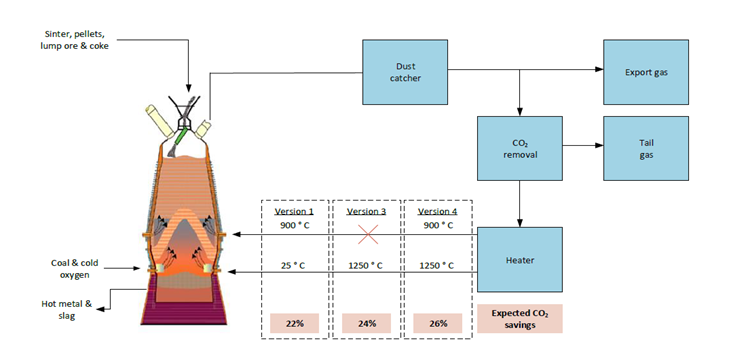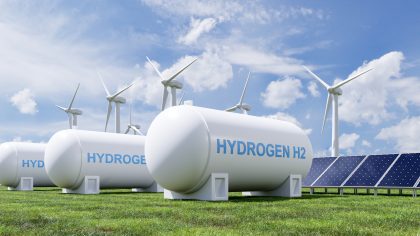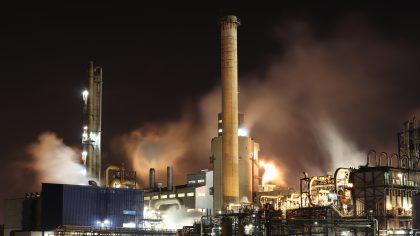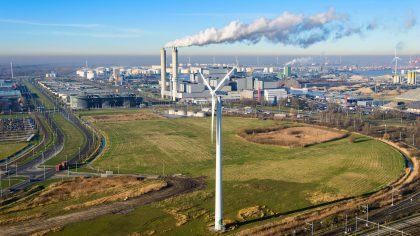The basic principles of the steelmaking process with a top gas recycling blast furnace are the same as in the conventional BF-BOF route. In the blast furnace step, iron ore (in the form of sinter, pellets, and lump ore) and coal (in the form of coke and pulverized coal), and flux (alkaline or “basic” materials, typically burnt lime or dolomite, which react with impurities to form slag that can be separated) are injected into the top of the blast furnace, flowing downward into contact with upward-moving, hot, CO-rich gases at about 900 to 1300 degrees C. Through this process, the iron ore (Fe2O3) is reduced into elemental iron, and the iron is mixed with carbon monoxide (CO) from the flue gas. In this process, carbon (supplied by coal and coke) acts as a reducing agent. The molten, carbon-rich (4-5%) pig iron (also referred to as hot metal) that is produced in the blast furnace is then oxidized in a basic oxygen furnace, in an exothermic oxidation reaction as pure, hot oxygen is blown over the metal, to reduce the carbon content to below 2% (often less than 1%, depending on final product specifications). Liquid crude steel is then tapped from the furnace, and slag (a byproduct, a mixture of metal oxides) removed. Coke (a high carbon content fuel, with most impurities presen t in coal removed) can be made onsite by heating coal in a coke oven by heating to a high temperature (typically around 1000 degC) in vacuum conditions, or can be purchased from an offsite coke oven.
However, in TGR-BF configuration, the blast furnace is modified in several important ways: Combustion of coal in the blast furnace is in the presence of pure oxygen, instead of air or oxygen-enriched air. This increases the CO2 content of the top gas (to about 35% dry basis), and reduces nitrogen. CO2 is removed (for utilization or storage) from the top gases (exhaust gases leaving the top of the BF) after they leave the blast furnace, and the remaining CO & H2-rich gas (with less than 3% CO2 content) is reinjected into the BF. There are several designs being studied, with different reinjection locations. The reinjected gases act as reducing agents, which means less coke is needed (leading to less energy use, cost, and emissions from coke ovens). The resulting pig iron has the same characteristics as from a conventional BF, and the steelmaking process is completed using a conventional BOF. There are several variations on TGR-BF technology under investigation, which can lead to variation and uncertainty in cost and energy parameters in the literature.
The process also produces several off-gases from the coke ovens and basic oxygen furnace with energy content that can be used either in the process or in on-site utilities. Their composition and calorific value is shown below.
-
Coke oven gas: 60% H2, 23% CH4, 6% N2, 4% H2O, 4% CO, 1% CO2, 2, 3% other; 17.3 MJ/normal cubic meter (LHV)
-
Basic oxygen furnace gas: 57% CO, 14% CO2, 14% N2, 12% H2O, 3% H2; 7.5 MJ/normal cubic meter (LHV)
All information in the datasheets is also available in ESDL (Energy System Description Language). You can find them in the Energy Data Repository (EDR).



